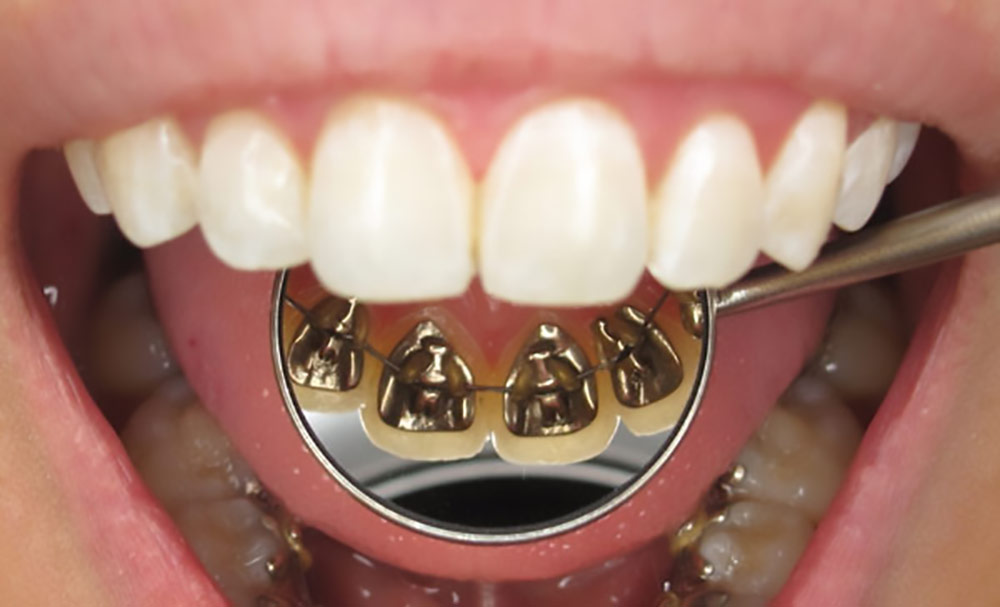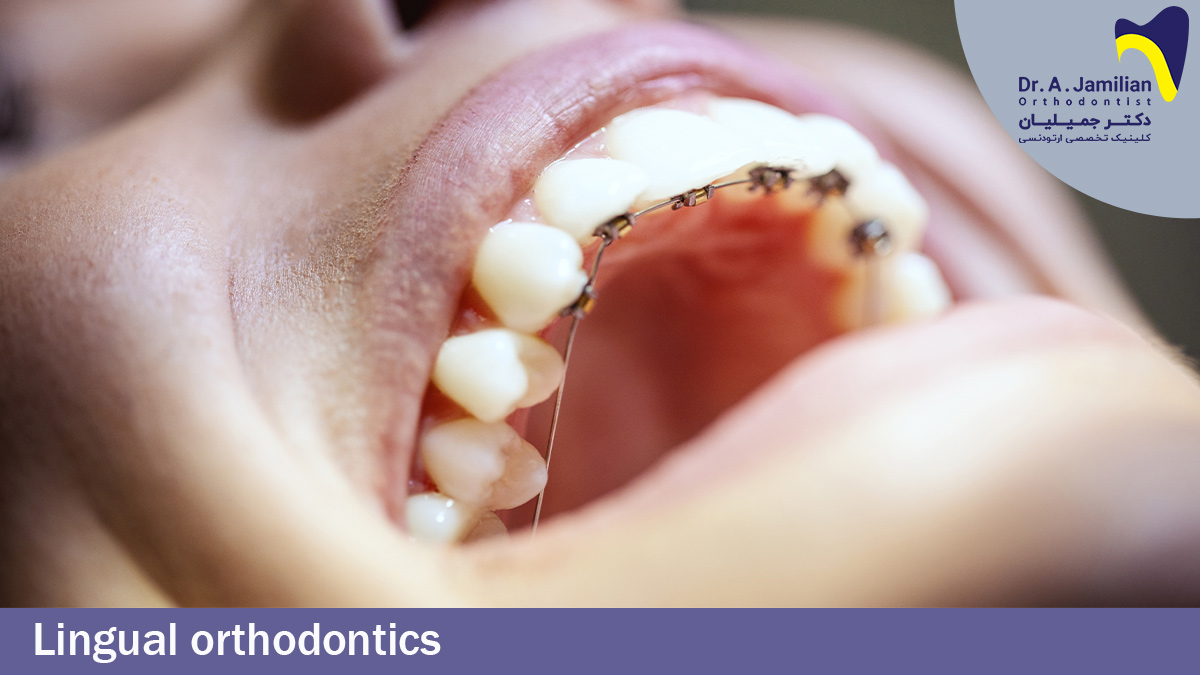In conventional orthodontics, metal brackets and wires are placed on the front of the teeth which are easily seen when speaking and may be unpleasant for many people. Although, many don’t know that there are various methods to solve this problem.
Lingual orthodontics is a method that is quite popular in some communities. In this method, the metal brackets and wires are attached to the back of the teeth, and are therefore suitable for people who do not want anyone to know their treatment or dislike the appearance of the brackets placed in front of their teeth in conventional orthodontics.

Lingual orthodontics history
Lingual orthodontics was first introduced about 30 years ago. It was thought at that time that a great change would occur in orthodontics with the advent of this method and it would replace all orthodontic procedures. However, fixed orthodontics, like all other methods, had its own advantages and disadvantages, and failed to meet expectations. However, some still believe in this method and use it in certain cases.
Lingual Orthodontics Method
In this method, the orthodontist first prepares a cast of the patient’s teeth and sends it to the lab for designing the brackets. The desired brackets are constructed and designed in the lab with the help of CAD/CAM software. Then the wires are made and attached to the brackets. This process takes around 5 to 6 weeks. The prepared brackets are then attached to the teeth. Keep in mind that patients under treatment must regularly visit the orthodontist to be monitored.

Advantages of Lingual Orthodontics
The main advantage of lingual orthodontics is that the metal brackets and wires are attached to the back of the teeth and hence, are not seen when talking or smiling. These brackets can also be further modified for rotation, adjusting the tooth height and removing the inter-tooth distance. Moreover, if the brackets are stained or discolored due to improper hygiene, the brackets in the mouth cannot be seen by others.
Disadvantages of Lingual Orthodontics
One of the disadvantages of this method is that orthodontists should pass specialized courses. In addition, the brackets in this method are positioned behind the tooth and may disturb the tongue and impair speaking and eating. On average it takes a couple of weeks to get used to this situation. Another problem with this method is its very difficult cleaning.
Rather than traditional methods, it takes more time for the orthodontist, and the patient has to endure the extra time. The distances between the lingual brackets are closer than those in the conventional method, making them more difficult to arrange and place in future sessions. Note that lingual orthodontics is much more expensive.
Lingual Orthodontics FAQ
1-Does Lingual Orthodontics Affect Speech?
Yes. When you are talking, your tongue touches the back of your teeth to make specific sounds. Considering that brackets are fixed to the back of your teeth when the lingual orthodontics are placed for the first time, it can influence your speech.
2-How Often Do You Need to Visit the Orthodontist During Lingual Orthodontics Treatment?
Lingual orthodontics require adjustment and tightening every four or six weeks, however, you need to visit your orthodontist sooner for more examinations.
3-What Foods Should We Avoid During Lingual Orthodontics Treatment?
Some foods such as popcorn, nuts, and sticky and hard foods should be avoided because they can damage your lingual orthodontics.
4-How Long Does Lingual Orthodontics Treatment Take?
The length of the lingual orthodontics treatment varies depending on the patients. In most of the patients, it may take from one to two years, but in severe cases, it may take more time to complete.
5-Does Lingual Orthodontics Cost More than Ordinary Fixed Orthodontics?
Lingual orthodontics costs more than labial metal brackets. Due to the fact that they are custom-made and manufactured in dental laboratories. These brackets are customized to fit your teeth. However, there are ready-made brackets that can be used for every patient, but they cost more than ordinary fixed brackets.
6-How Do Lingual Braces Move Teeth?
Lingual orthodontics exert more pressure on your teeth, which can cause the periodontal membrane to stretch and compress and the teeth to become loose. Afterward, a new bone will be formed around the teeth and place them in a new position.
7-Can I Clean My Teeth Properly with Lingual Orthodontics?
Yes. However, you should spend more time keeping your teeth clean. After placing the lingual brackets on your teeth, we will explain the proper brushing and flossing techniques to you.
8-Can Lingual Orthodontics Correct Overbite Problem?
Orthodontics is the most effective and common treatment choice for correcting the overbite. They exert pressure on the teeth and move them and position the teeth in ideal locations and correct overbite problems.






